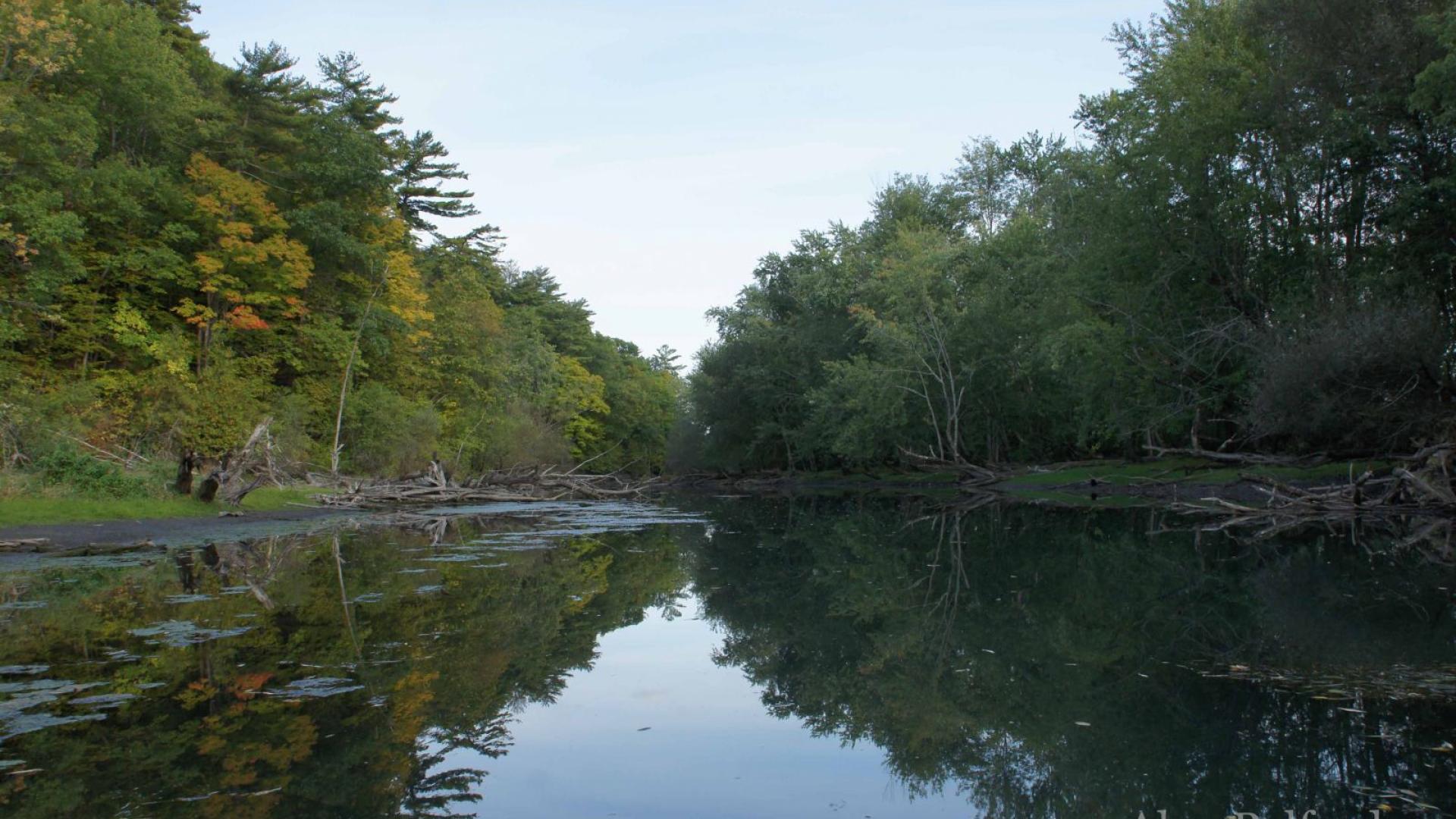Early fall on the water
The early fall day was advancing through the afternoon when I set out with my dog, Wren, onto the La Chute River on our way to explore Ti Marsh in Ticonderoga. The paddle is my favorite in the Champlain Valley, and one of my favorite paddles in the entire North Country. I was fortunate since this was my second paddle on the La Chute in recent weeks – it is a great place to view both natural scenery and wildlife and I find myself regularly stopping for birds, other wildlife, and photos as a result.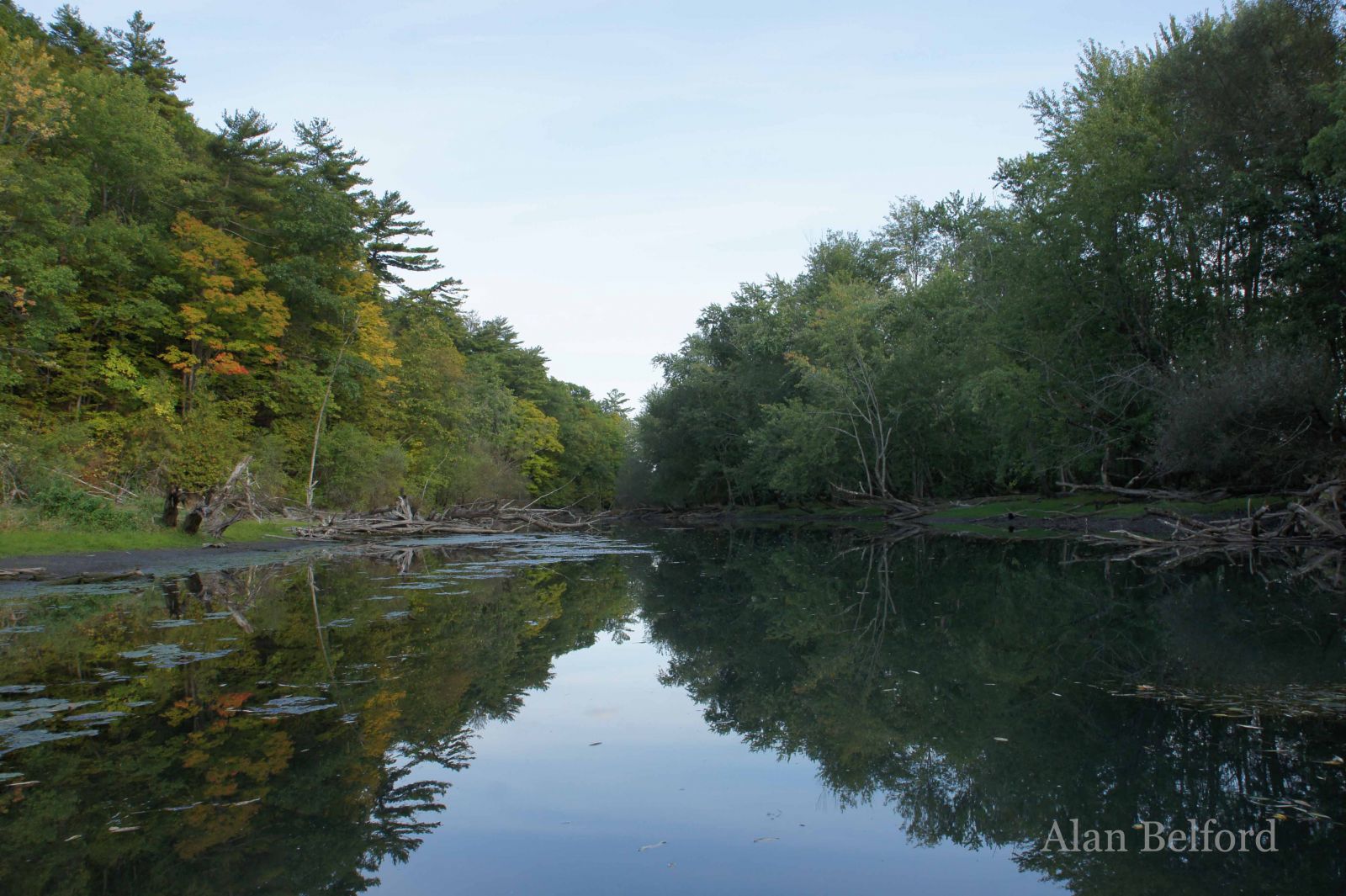
That proved true almost immediately on this paddle when a mixed flock of songbirds caught my attention and I paused to sift through it to find Yellow-rumped Warblers, a bunch of Chipping Sparrows and a few Purple Finches. A short distance further I added White-breasted Nuthatches and a Ruby-crowned Kinglet – all shaking the changing fall leaves to life.
Watching a Hunting Mink
But my interest in songbirds was soon diverted when I spotted an American mink hopping along the stream bank, nosing along the rocks for mice, frogs, crayfish, fish, and whatever else it could find. Now and then it would dive into the water, resurface, and then continued bouncing along the bank toward us. So when it was under the water I set our course to drift downstream toward it and readied my camera, hoping the mink would remain on its route.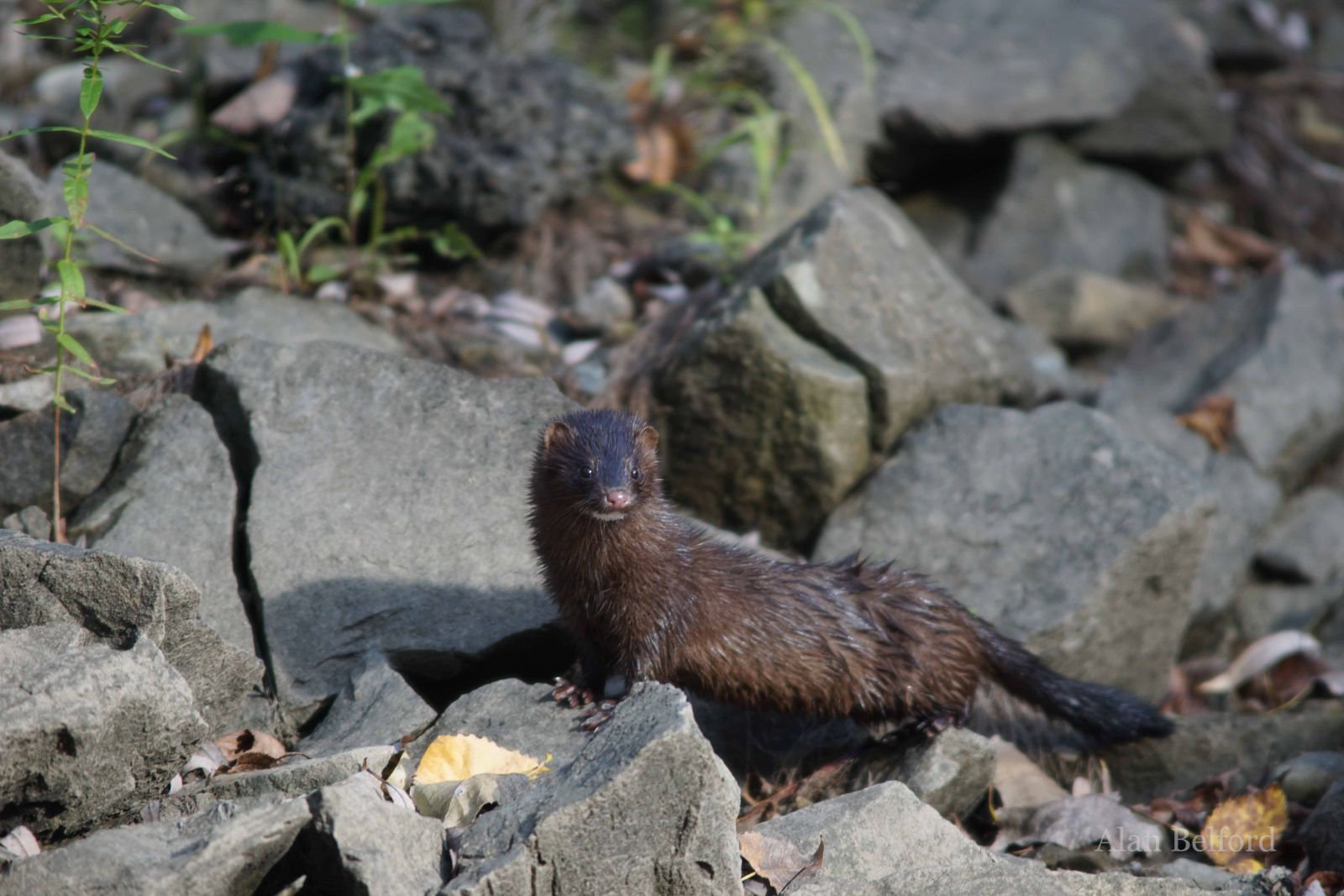
It did. The mink popped out of the water, and then bounded over the rocks toward us, seemingly oblivious to our presence. It dived again. Then it came up and noticed us, paused to assess the risk, and kept advancing toward us anyway, I clicking as many photos I could of the sequence, and Wren suddenly getting interested in the curious mustelid, sitting up abruptly and managing a few loud exhales (pseudo-barks) while I quietly told her not to make noise. She cooperated quite well.
Our path diverged from the mink and I paused while I watched it continue behind us upstream. Turning the boat around I tried the technique again, only this time I was paddling into the current which meant drifting and keeping the boat straight would be more difficult. But the method worked well enough the second time, and I added a few more shots before the mink dived into the water again, this time emerging with a blue gill that looked much too large for it and it awkwardly bounded off with its fish dinner. We turned and continued downstream.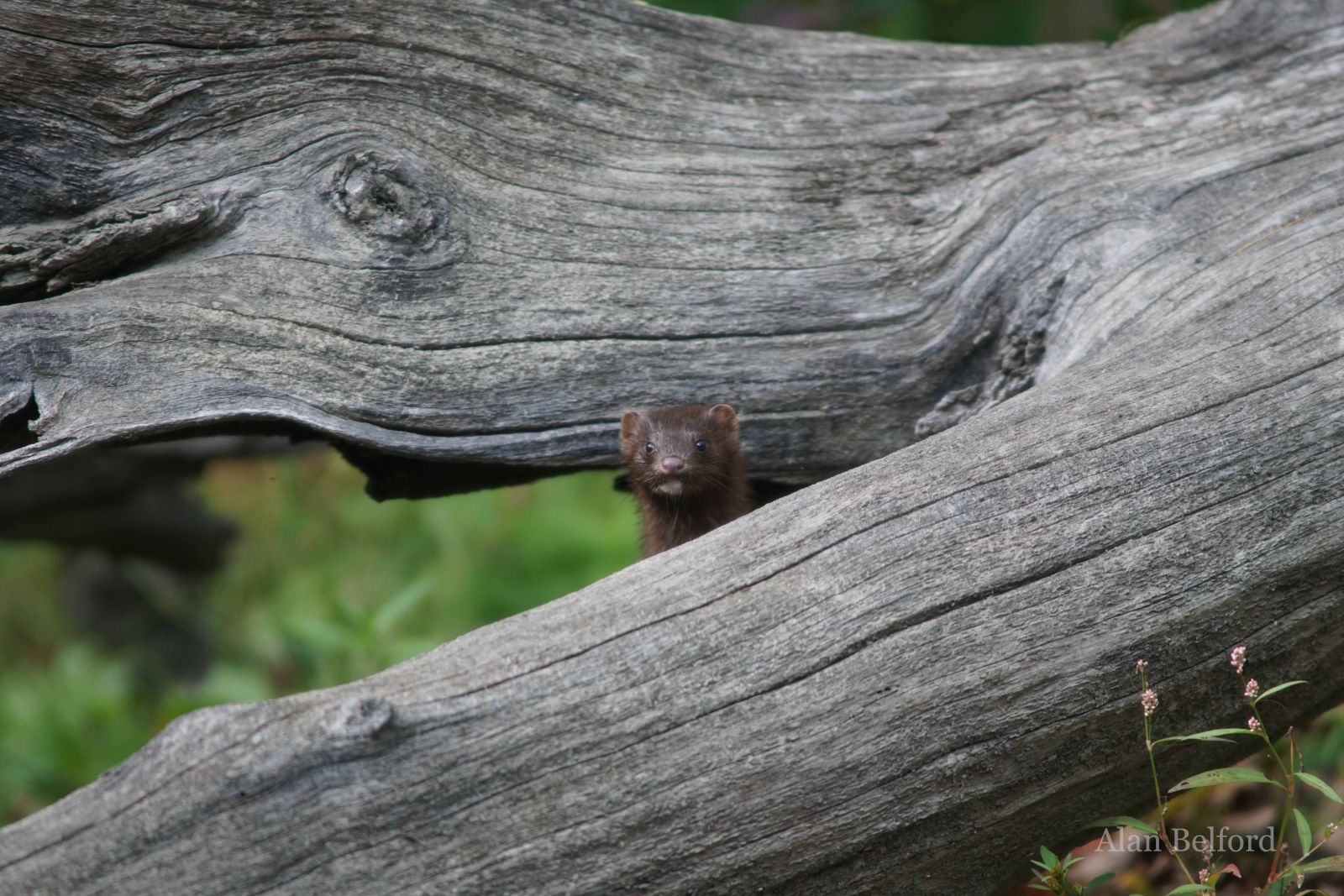
Not much further, we came across another mink, and it was difficult to know if it was the same individual or not. The first mink would have had to quickly eat or cache its fish and then race ahead of us for us to re-encounter it that speedily. And this mink didn’t look quite as large as the first, nor did it seem as photogenic. After waiting a bit to see if it would pop out from behind the logs which line so much of the LaChute, we moved on – Wren once again intently watching the place where we last saw it.
Birding in Ti Marsh
From there we made quick progress downstream - spooking Wood Ducks, Great Blue Herons, and Belted Kingfishers ahead of us as well as painted turtles and common map turtles from the logs along the river, until the landscape opened up as we reached Ti Marsh. I could see several Black-crowned Night Herons perched on the dead trees along the river, counting a dozen of them as they shifted at our approach. I stuck to the far side of the river in an effort not to spook them, taking as many photos as I could as they sat in the low afternoon sun, but most of them flew this way and that as we drew near.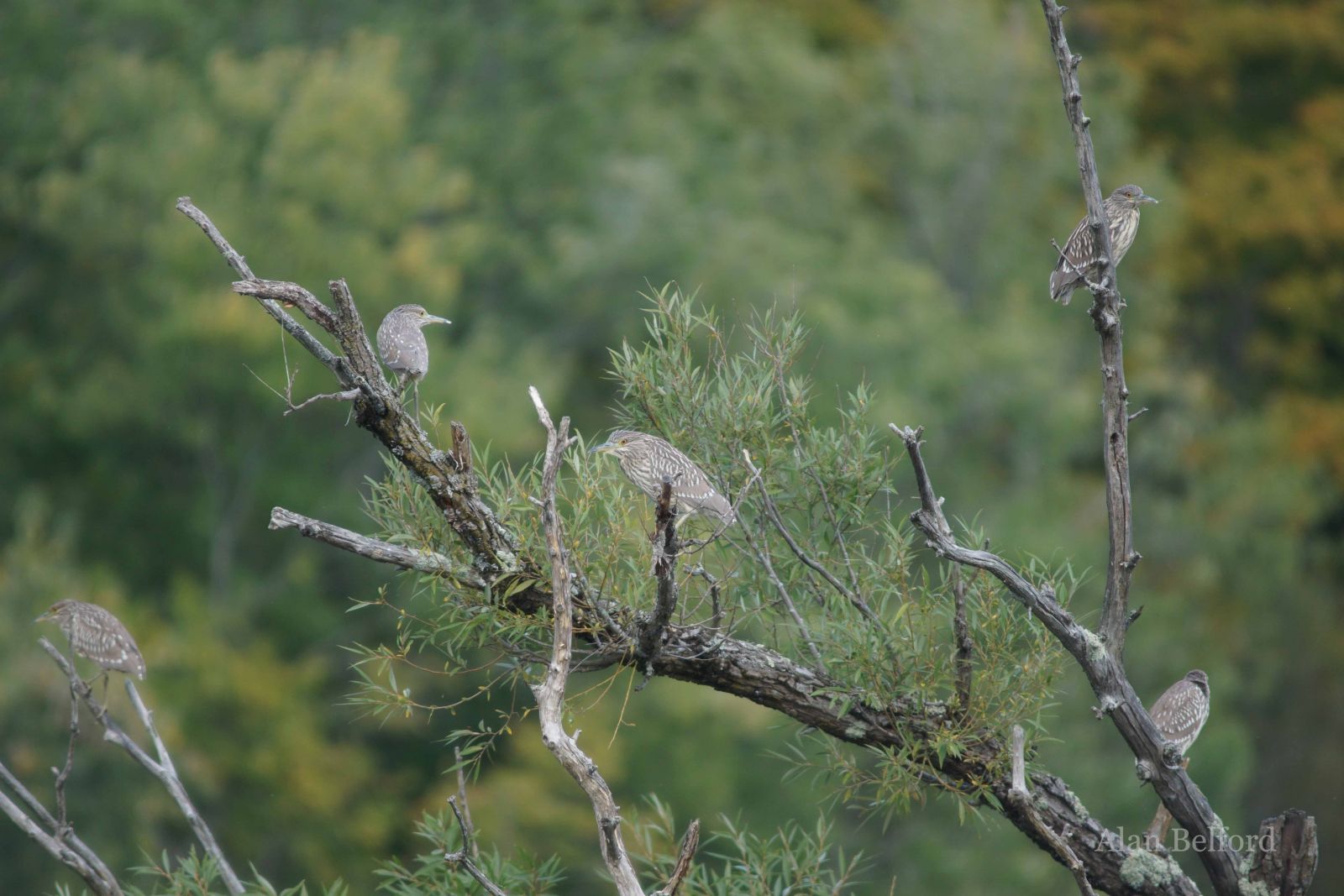
At the same time I was photographing a few shorebirds on the opposite of the river – a couple Lesser Yellowlegs, a Spotted Sandpiper, and a Solitary Sandpiper. On my trip on the La Chute a few weeks earlier I had also found a few shorebirds – whenever water levels are low in Champlain as they are this year, it exposes mudflats around the marsh which are great during late summer and early fall. On my previous trip, I had also seen a Cooper’s Hawk which was chased by the Black-crowned Night Herons from their dead tree, but I did not see one this time as my head swiveled from side to side from the shorebirds to the Night Herons and back again. Instead I spotted my first Bald Eagle of the trip and I considered how no Black-crowned Night Heron would ever think about taking a bird like that on.
We drifted beyond the birds and I decided not to turn around and potentially spook the herons from their perch. So we continued to follow the river out through the marsh toward its mouth, stopping for birds like Wood Ducks, Blue-winged Teal, Great Blue Herons, a lone Great Egret, and a few more shorebirds.
A beautiful landscape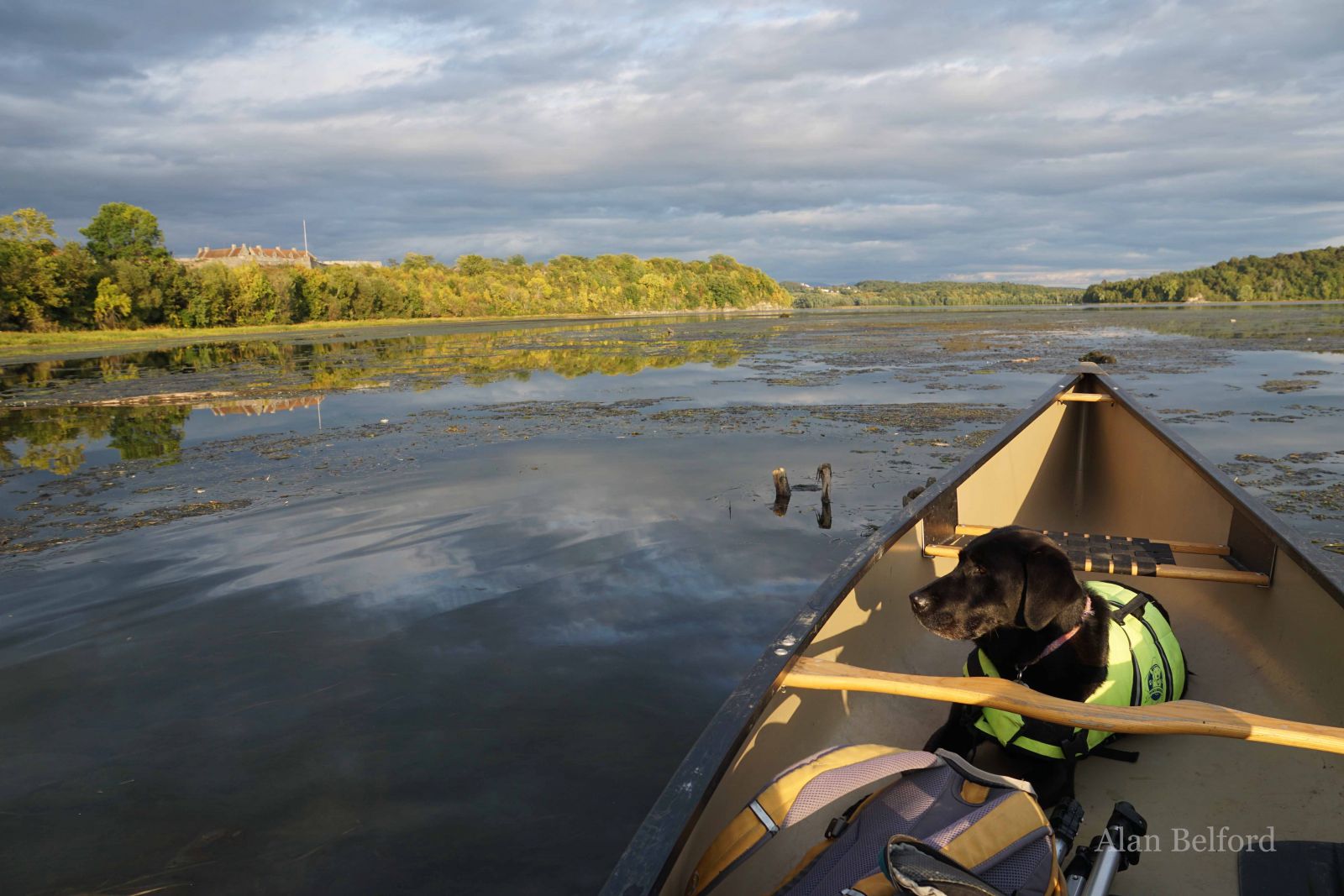
We nosed our way into the shallow waters of the bay which sits beneath Fort Ti, which looked impressive above in the full sun as changing leaves framed it on all sides. I stopped and took a bunch of photos of the scene, and I then scanned the mudflats for more shorebirds. A friend of mine had found a Buff-breasted Sandpiper at the river mouth on the previous day and I was hoping it might have stuck around to feed before continuing its migration south. But I noted no new shorebirds on the flats and with Fort Ti still towering in the sun above, we pushed back into the main channel on our way to the river mouth.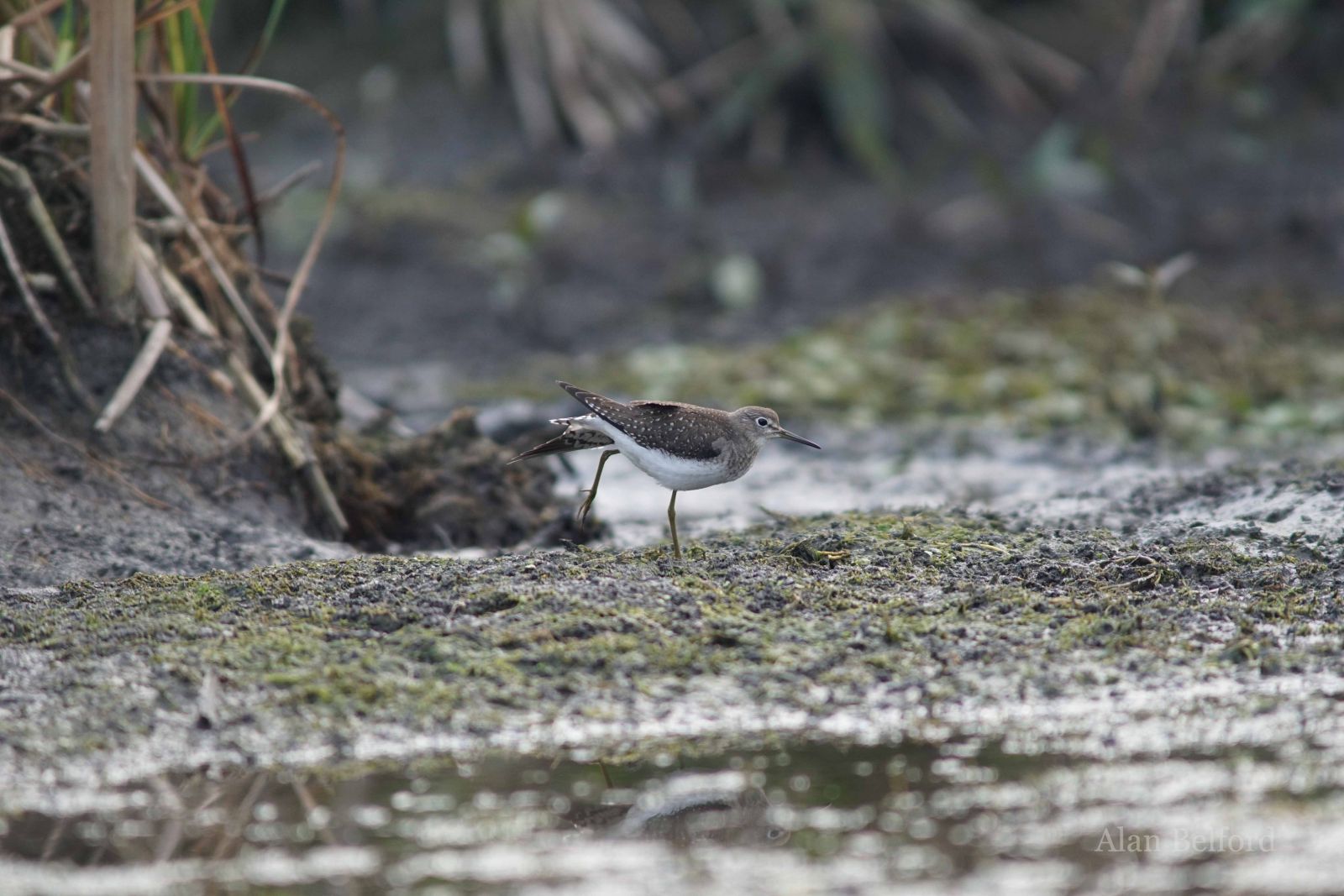
I didn’t find the Buff-breasted Sandpiper there either when we arrived – I had expected it to be gone – migrating birds often put in a fleeting stop during their journey. But we did spot a North American river otter fishing near the mouth of the river, and the sky expanded blue above the gold and green marsh, bookended by the leafy glow of Fort Ti to the north and the dark form of Mt. Defiance to the south, here and there highlighted by brightly colored trees. We sat there for a while taking in the landscape – Wren seemed to be joining me in this activity too - before we pushed through some shallow waters to be sure we hadn’t skipped over a mudflat where a shorebird or something else could be hiding.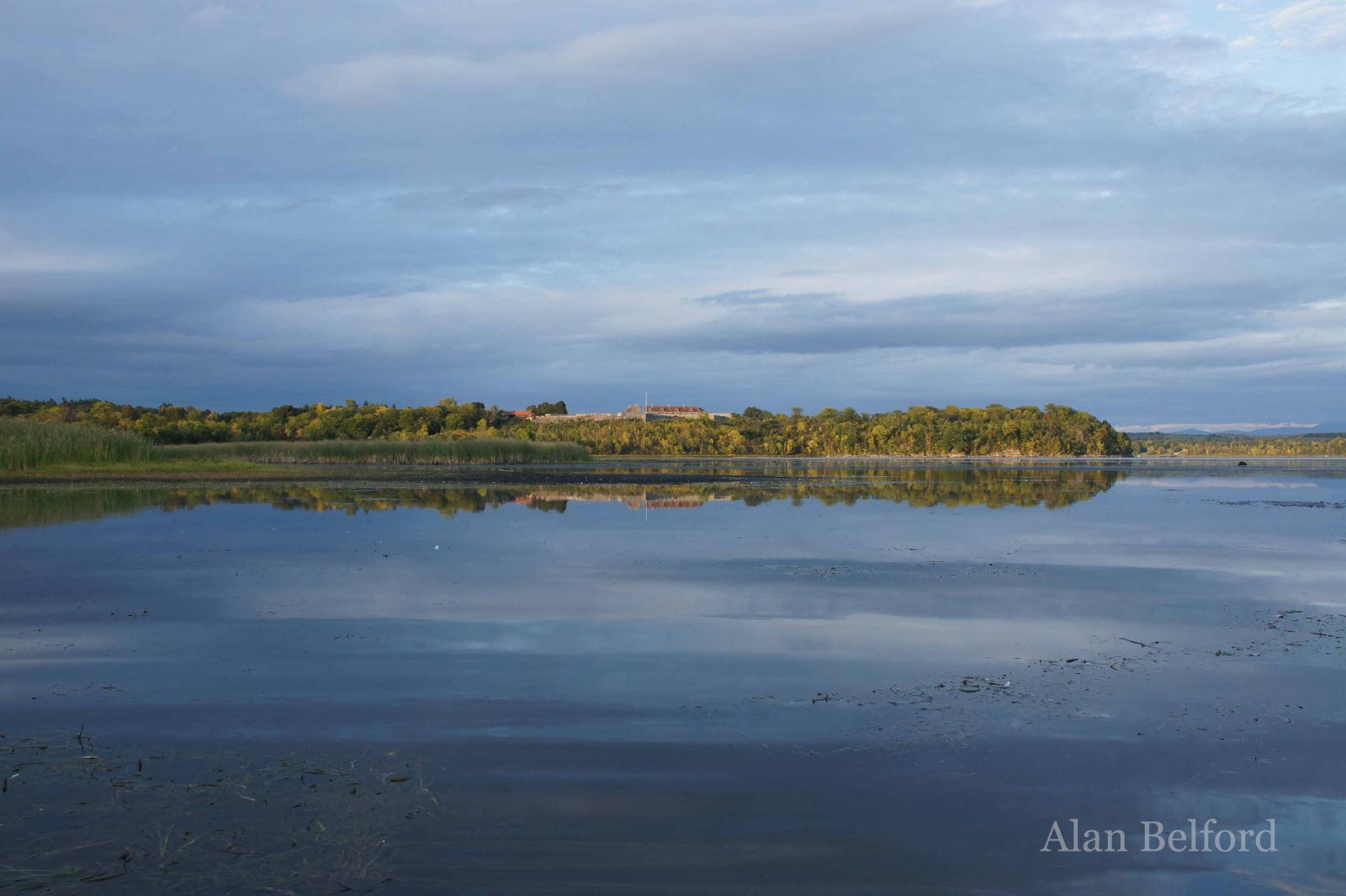
The truth is, there are so many mudflats in Ti Marsh right now that it is impossible to check them all – that’s just part of the adventure and beauty of such of place. And so we gave up that quest and began to head back up the La Chute, immediately finding an American Coot and a few muskrats. I also noticed that the numbers of shorebirds had increased while we were gone – the new birds were likely migrants which had just stopped in to feed, or perhaps they had been feeding nearby and had simply moved along the channel for the night. Either way, I added Semipalmated Sandpiper, more Greater Yellowlegs, a bunch more Lesser Yellowlegs, and most exciting of all, a Stilt Sandpiper. I clicked away at photos while looking for more birds as we eased our way along the mudflats where the birds busily fed not seeming to care about us.
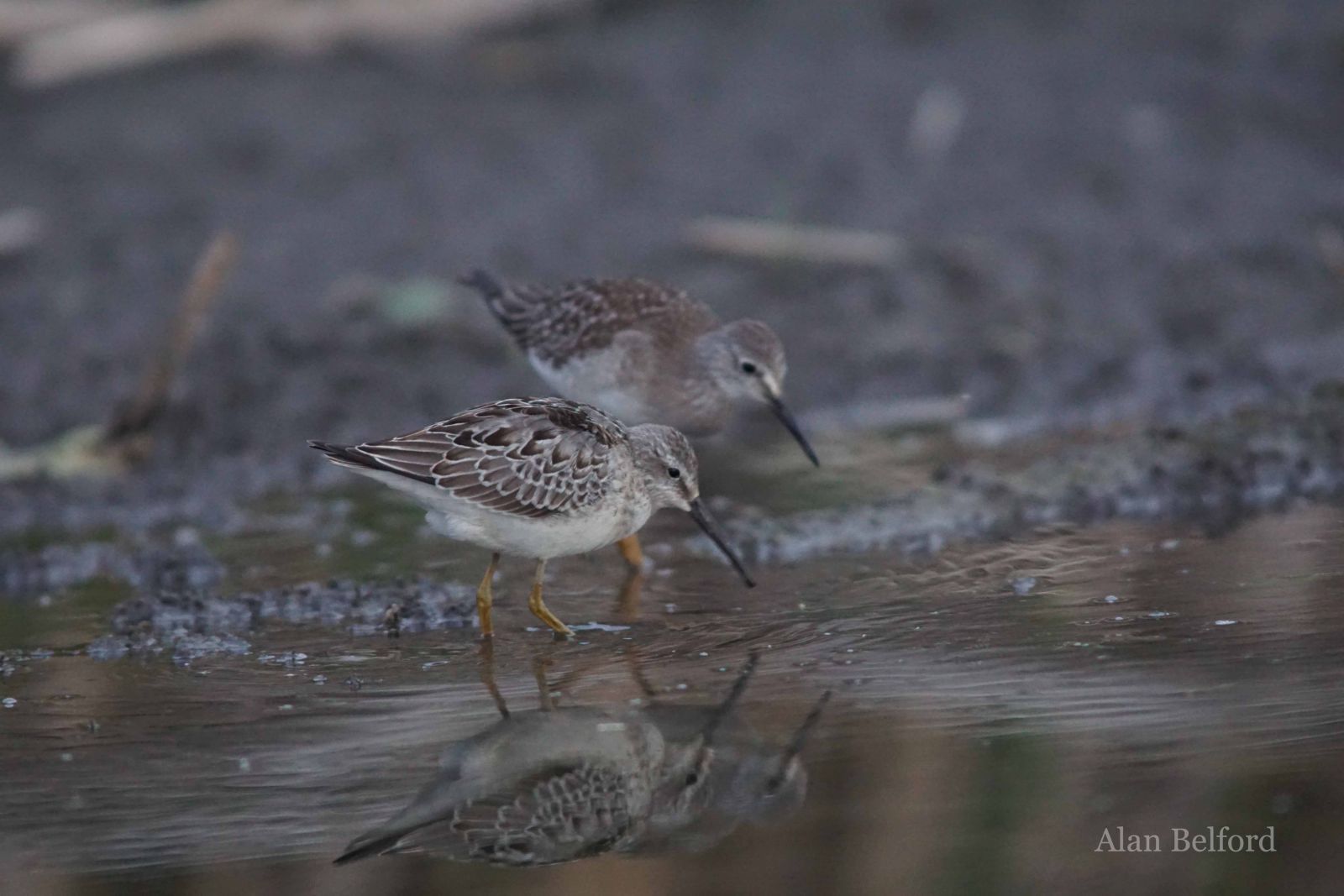
Escorted by beavers on our way back
And so we began to paddle back steadily, immediately invoking the slap of a beaver’s tail as we did. That was followed by another slap and then another as the beaver – and perhaps a few beavers – ushered us out of the marsh, sparing us any subtlety that we were unwelcome there. Wren sat up in search of them for the rest of the trip. Some of the Black-crowned Night Herons flew again at our approach while others sat high in the snags watching us below as a new set of beavers took up the cause of escorting us from the marsh and back up the La Chute.
We were passed like an unwanted baton from one beaver to the next all the way to the take-out, the overhanging trees becoming darker - making it difficult on my eyes to pick out the beavers before they scolded us with a loud splash that broke the quiet along the river. It was hard not to startle when they did, and I had the feeling they knew I couldn’t see them any longer. Perhaps Wren – who could certainly see them – was in on their little joke. Finally, the last beaver attendant deciding that it had taken us far enough away, we arrived back at the take-out and I lashed the boat back onto the car in the light of my headlamp while Wren stretched her legs. We grabbed a snack for the road from the cooler and headed for home.
Fall offers great colors, birding, paddling, and outdoor adventures. Don’t miss out! Plan your trip today by visiting our dining and lodging pages.

